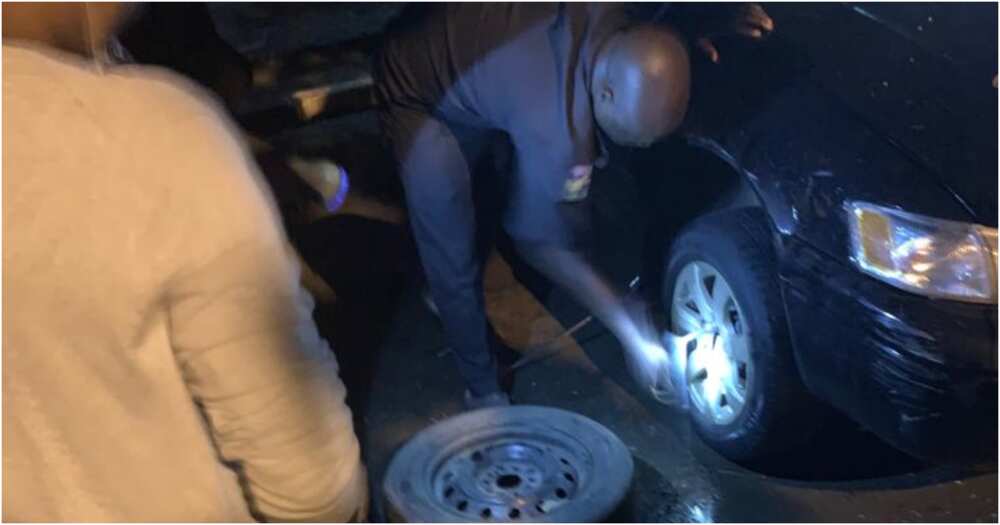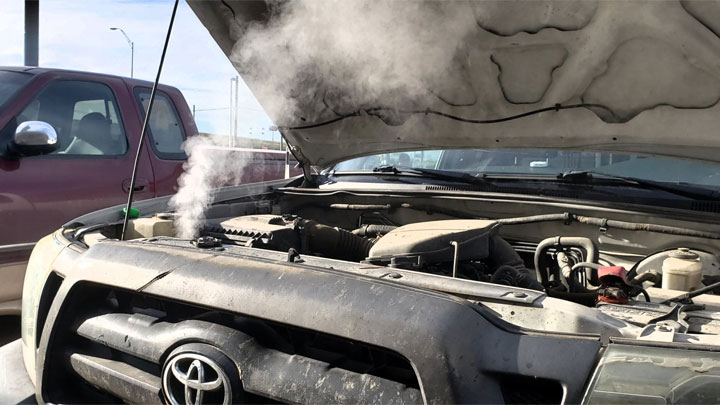Lagos drivers face incessant traffic congestion, aggravated by poorly maintained roads and inadequate infrastructure. Reckless driving behaviors, including speeding and lane weaving, pose constant risks. Potholes and uneven surfaces contribute to vehicle wear and tear, demanding frequent maintenance.
Navigation challenges arise from inconsistent road signage and unpredictable route changes. Additionally, the prevalence of motorbikes popularly called Okada, and commercial vehicles also known as Danfo adds to the complexity of maneuvering through Lagos’ bustling streets.
Here are some common car issues faced by Lagos car owners along with DIY repair tips:
1. Flat Tire

Flat tires are a common issue, especially on Lagos roads with potholes and debris. To fix a flat tire, follow these steps:
– Pull over to a safe location.
– Use a jack to lift the car off the ground.
– Remove the lug nuts and the flat tire.
– Install the spare tire and tighten the lug nuts.
– Lower the car and tighten the lug nuts again.
– Check the tire pressure and inflate as needed.
2. Battery Problems

Car batteries can fail due to extreme heat or old age. To diagnose and replace a faulty battery:
– Turn off the engine and open the hood.
– Check the battery terminals for corrosion and clean them if necessary.
– Use a multimeter to test the battery voltage. A healthy battery should have around 12.6 volts.
– If the battery is weak or dead, disconnect the terminals and remove the old battery.
– Install the new battery, ensuring the positive and negative terminals are correctly connected.
– Tighten the terminals and start the engine to confirm the repair.
3. Engine Overheating

Lagos traffic and hot weather can cause engines to overheat. Here’s how to address this issue:
– Pull over to a safe location and turn off the engine.
– Allow the engine to cool down for at least 30 minutes.
– Check the coolant level in the reservoir and top it up if necessary.
– Inspect the radiator hoses for leaks or damage.
– If the engine continues to overheat, have the cooling system inspected by a professional mechanic.
4. Faulty Alternator

A failing alternator can cause electrical issues and lead to a dead battery. To replace the alternator:
– Disconnect the battery terminals to prevent electrical shock.
– Locate the alternator under the hood and remove the drive belt.
– Disconnect the electrical connectors and mounting bolts securing the alternator.
– Install the new alternator in the reverse order, ensuring all connections are tight.
– Reconnect the battery terminals and start the engine to confirm the repair.
5. Brake Pad Replacement

Worn brake pads can affect stopping power and safety. Here’s how to replace them:
– Lift the car and remove the wheels.
– Locate the brake caliper and remove the retaining bolts.
– Slide out the old brake pads and inspect the caliper and rotor for wear.
– Install the new brake pads and reassemble the caliper.
– Repeat the process for the remaining wheels.
– Pump the brake pedal to restore pressure before driving.
It’s important to note that while DIY repairs can save money, some car issues may require professional expertise. If you’re unsure or uncomfortable with a repair, it’s best to consult a qualified mechanic.
You must be logged in to post a comment Login